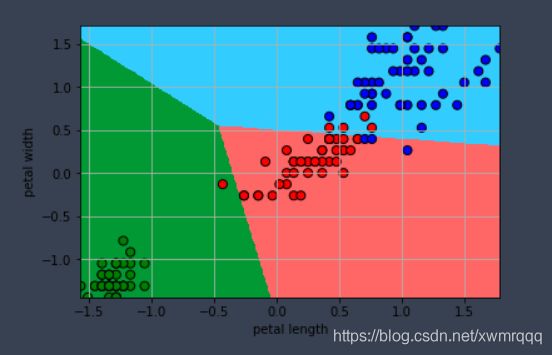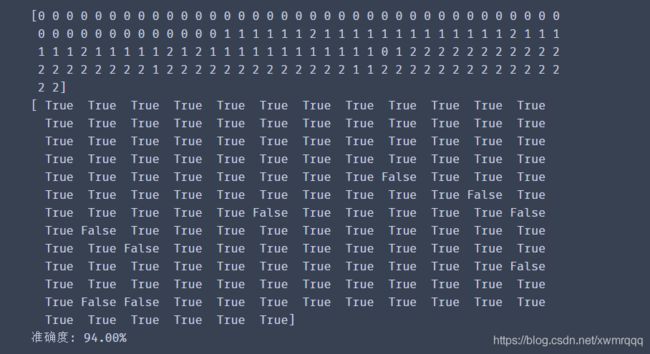- 使用E2B数据分析沙盒进行文件分析
qahaj
数据分析数据挖掘python
使用E2B数据分析沙盒进行文件分析在现代数据分析中,运行环境的安全性与灵活性是确保数据处理高效可靠的关键因素。E2B提供了一个数据分析沙盒,能够在隔离的环境中安全地执行代码,非常适合构建诸如代码解释器或类似于ChatGPT的高级数据分析工具。在这篇文章中,我将演示如何使用E2B的数据分析沙盒来对上传的文件进行分析,为您提供一个强大的Python代码示例。核心原理解析E2B的数据分析沙盒为开发者提供
- Python笔记——DeprecationWarning
小橘猫cate
Pythonpython开发语言
定义如下阶跃函数时出现警告,defstep_function(x):returnnp.array(x>0,dtype=np.int)DeprecationWarning:`np.int`isadeprecatedaliasforthebuiltin`int`.Tosilencethiswarning,use`int`byitself.Doingthiswillnotmodifyanybehavio
- 使用 ArcGIS 和 Python 进行地理信息系统(GIS)分析
scaFHIO
arcgispythonjava
在本篇文章中,我们将探讨如何利用ArcGIS和Python进行地理信息系统(GIS)分析。ArcGIS是由Esri开发和维护的一系列GIS软件,包括客户端、服务器和在线解决方案。本文主要聚焦于如何使用Python和arcgis库来实现GIS功能。技术背景介绍ArcGIS提供了功能强大的工具来进行矢量和栅格分析、地理编码、地图制作以及路线和路径规划。通过arcgisPython库,我们可以访问Esr
- PHP 爬虫实战:爬取淘宝商品详情数据
EcomDataMiner
php爬虫开发语言
随着互联网技术的发展,数据爬取越来越成为了数据分析、机器学习等领域的重要前置技能。而在这其中,爬虫技术更是不可或缺。php作为一门广泛使用的后端编程语言,其在爬虫领域同样也有着广泛应用和优势。本文将以爬取斗鱼直播数据为例,介绍php爬虫的实战应用。准备工作在开始爬虫之前,我们需要做一些准备工作。首先,需要搭建一个本地服务器环境,推荐使用WAMP、XAMPP等集成化工具,方便部署PHP环境。其次,我
- DeprecationWarning: 无效的转义序列‘\/‘解决方案
数据科学智慧
linux运维服务器Python
DeprecationWarning:无效的转义序列’/'解决方案在Python编程中,您可能会遇到"DeprecationWarning:无效的转义序列’/'"的警告消息。这个警告通常在您尝试使用无效的转义序列时出现,例如在正则表达式或字符串中。本文将为您提供解决方案,以解决这个问题。首先,让我们了解一下转义序列的概念。在Python中,某些字符前面带有反斜杠(\),以表示特殊含义,例如换行符(
- python做飞机大战让敌机打子弹_python(pygame)滑稽大战(类似飞机大战) 教程
青云若水
初始准备工作本项目使用的python3版本(如果你用python2,我不知会怎么样)Ide推荐大家选择pycharm(不同ide应该没影响)需要安装第三方库pygame,pygame安装方法(windows电脑,mac系统本人实测与pygame不兼容,强行运行本项目卡成ppt)电脑打开cmd命令窗口,输入pip3installpygame补充说明:由于众所周知的原因,安装过程中下载可能十分缓慢,甚
- 利用Python和深度学习方法实现手写数字识别的高精度解决方案——从数据预处理到模型优化的全流程解析
快撑死的鱼
Python算法精解python深度学习开发语言
利用Python和深度学习方法实现手写数字识别的高精度解决方案——从数据预处理到模型优化的全流程解析在人工智能的众多应用领域中,手写数字识别是一项经典且具有重要实际应用价值的任务。随着深度学习技术的飞速发展,通过构建和训练神经网络模型,手写数字识别的精度已经可以达到99%以上。本文将以Python为主要编程语言,结合深度学习的核心技术,详细解析手写数字识别的实现过程,并探讨如何进一步优化模型以提高
- python之连连看游戏
CrMylive.
python游戏pygame
实现一个简单的连连看游戏需要用到pygame库和一些基本的数据结构和算法。导入pygame库在程序开始之前,首先需要导入pygame库。在Python中,可以使用以下代码导入pygame库:importpygame初始化Pygame在导入pygame库之后,需要使用以下代码初始化pygame:pygame.init()设置游戏窗口设置游戏窗口的大小、标题等属性。可以使用以下代码设置游戏窗口大小为6
- Python, Java, C ++开发全球热能动态监测APP
Geeker-2025
pythonjavac++
开发一个“全球热能动态监测APP”是一个非常有意义的想法,尤其是在能源管理和环境保护领域。以下是开发该APP的详细思路和技术实现方案,分别针对Python、Java和C++。---###**功能需求分析**1.**全球热能数据展示**:-各国或地区的热能生产、消费和进出口数据。-实时监测热能动态(如发电厂的热能输出、温度变化等)。2.**地图可视化**:-在地图上标注热能发电厂的位置。-使用颜色或
- 强化学习中的深度卷积神经网络设计与应用实例
数字扫地僧
计算机视觉cnn人工智能神经网络
I.引言强化学习(ReinforcementLearning,RL)是机器学习的一个重要分支,通过与环境的交互来学习最优策略。深度学习,特别是深度卷积神经网络(DeepConvolutionalNeuralNetworks,DCNNs)的引入,为强化学习在处理高维度数据方面提供了强大工具。本文将探讨强化学习中深度卷积神经网络的设计原则及其在不同应用场景中的实例。II.深度卷积神经网络在强化学习中的
- 动物识别系统代码python_动物识别系统__代码
weixin_39812065
动物识别系统代码python
1动物识别专家系统动物识别专家系统是流行的专家系统实验模型,它用产生式规则来表示知识,共15条规则、可以识别七种动物,这些规则既少又简单,可以改造他们,也可以加进新的规则,还可以用来识别其他东西的新规则来取代这些规则。动物识别15条规则的中文表示是:规则1:如果:动物有毛发则:该动物是哺乳动物规则2:如果:动物有奶则:该单位是哺乳动物规则3:如果:该动物有羽毛则:该动物是鸟规则4:如果:动物会飞,
- 动物识别系统代码python_动物识别系统代码
weixin_39862794
动物识别系统代码python
简易动物识别专家系统源代码(调试无错!)#includevoidbirds(){inta;printf("**************************************\n");printf("1.长腿,长脖子,黑色,不会飞。\n");printf("2.不会飞,会游泳,黑色.\n");printf("3.善飞\n");printf("4.无上述特征\n");printf("****
- Python深浅拷贝
Karl_zhujt
Pythonpython
文章目录1概述2数据类型2.1可变类型2.2不可变类型3深浅拷贝3.1浅拷贝3.2深拷贝4深浅拷贝对数据类型的影响4.1对于不可变类型的影响4.2对于可变类型的影响4.3总结5实现机制5.1copy5.2id6示例6.1普通赋值6.2浅拷贝可变类型6.3浅拷贝不可变类型6.4深拷贝可变类型6.5深拷贝不可变类型7注意事项1概述在Python中,可变类型和不可变类型的拷贝行为有所不同。理解它们的区别
- 基于 EMA12 指标结合 iTick 外汇报价 API 、股票报价API、指数报价API的量化策略编写与回测
iTick提供了强大的外汇报价API、股票报价API和指数报价API服务,为量化策略的开发提供了丰富的数据支持。本文将详细介绍如何使用Python结合EMA12指标和iTick的报价API来构建一个简单的量化交易策略,并对该策略进行回测。1.引言在量化交易领域,技术指标是构建交易策略的重要基础。iTick提供了强大的外汇报价API、股票报价API和指数报价API服务,为量化策略的开发提供了丰富的数
- python动物识别系统(仅有识别功能)
OnlySecondS
''@Time:2022/03/298:39@Author:11863@File:AIS_main.py@software:PyCharm'''rules={}#以字典形式存储#读取文件defreadRules():rulesFile=open("rules.txt","r",encoding='utf-8')forlineinrulesFile:#按行读取line=line.replace('I
- 深度优先搜索和广度优先搜索详细解析和区别
潇杨爱吃粉
深度优先宽度优先算法数据结构
一、深度优先搜索(DFS)1.核心思想像探险家走迷宫,遇到岔路就选一条路走到头,无路可走时返回上一个岔路口换另一条路。2.实现方式数据结构:栈(Stack,先进后出)或递归(隐式栈)遍历顺序:纵向深入,优先访问最深层的节点3.图解示例假设有以下树结构:A/\BC/\/DEFDFS遍历顺序(从根节点A出发):A→B→D→E→C→F4.代码实现(Python)defdfs(graph,start):s
- DeepSeek 模型未来怎么走?技术创新、行业落地全解析!
网罗开发
AI大模型人工智能人工智能职场和发展
网罗开发(小红书、快手、视频号同名) 大家好,我是展菲,目前在上市企业从事人工智能项目研发管理工作,平时热衷于分享各种编程领域的软硬技能知识以及前沿技术,包括iOS、前端、HarmonyOS、Java、Python等方向。在移动端开发、鸿蒙开发、物联网、嵌入式、云原生、开源等领域有深厚造诣。图书作者:《ESP32-C3物联网工程开发实战》图书作者:《SwiftUI入门,进阶与实战》超级个体:CO
- Python-modbustcp通信-plc读写
张凯的工作室
pythonpython
Python-modbustcp通信-plc读写1,功能码说明读取:%m对应READ_COILS线圈寄存器数值0和1%mw存单字节%mf浮点数%md双字节对应READ_HOLDING_REGISTERS保持寄存器写入单个写入线圈寄存器WRITE_SINGLE_COIL%m单个写入保持寄存器WRITE_SINGLE_REGISTER写入多个保持寄存器WRITE_MULTIPLE_REGISTERS写
- PyCharm v2024.3.5 强大的Python IDE工具 支持M、Intel芯片
2401_89264762
pythonidepycharm
PyCharm是一种PythonIDE,带有一整套可以帮助用户在使用Python语言开发时提高其效率的工具,比如调试、语法高亮、Project管理、代码跳转、智能提示、自动完成、单元测试、版本控制。此外,该IDE提供了一些高级功能,以用于支持Django框架下的专业Web开发。应用介绍PyCharm是由JetBrains打造的一款PythonIDE,VS2010的重构插件Resharper就是出自
- 免费界面库 python_一个非常简单好用的Python图形界面库(PysimpleGUI)
不妧
免费界面库python
前一阵,我在为朋友编写一个源代码监控程序的时候,发现了一个Python领域非常简单好用的图形界面库。说起图形界面库,你可能会想到TkInter、PyQt、PyGUI等流行的图形界面库,我也曾经尝试使用,一个很直观的感受就是,这太难用了。就去网上搜搜,看看有没有一些demo,拿来改改,结果很少有,当时我就放弃了这些图形库的学习,转而使用了vue+flask的形式以浏览器网页作为程序界面,因为我会这个
- Python 网络爬虫:从入门到实践
一ge科研小菜菜
编程语言Pythonpython
个人主页:一ge科研小菜鸡-CSDN博客期待您的关注网络爬虫是一种自动化的程序,用于从互联网上抓取数据。Python以其强大的库和简单的语法,是开发网络爬虫的绝佳选择。本文将详细介绍Python网络爬虫的基本原理、开发工具、常用框架以及实践案例。一、网络爬虫的基本原理网络爬虫的工作流程通常包括以下步骤:发送请求:向目标网站发送HTTP请求,获取网页内容。解析内容:提取需要的数据,可以是HTML标签
- PySimpleGUI 4.60.5
孔帆贝
PySimpleGUI4.60.5【下载地址】PySimpleGUI4.60.5**PySimpleGUI**是一款专为简化PythonGUI(图形用户界面)编程而生的库。该库设计宗旨在于通过提供简洁、易懂的API接口,使开发者能够以更快的速度和更少的代码量创建出美观实用的应用程序。对于无论是GUI编程新手还是寻求快速开发工具的老手来说,PySimpleGUI都是一个极具吸引力的选择。其通过封装了
- 《今日AI-人工智能-编程日报》-源自2025年3月19日
小亦编辑部
每日AI-人工智能-编程日报人工智能
1.豆包AI编程功能迎来三项重磅升级豆包平台今日宣布其AI编程功能迎来三项重要升级,包括:HTML实时预览:支持用户在编写HTML代码时实时查看网页效果,显著提升前端开发效率,尤其适用于小游戏和网页制作。Python代码直接运行与一键修复:用户可直接运行Python代码,并在出错时一键修复,极大降低了编程门槛,提升了开发效率。生成完整项目:新增生成完整项目的功能,帮助用户快速创建应用程序,缩短开发
- 模拟退火算法:原理、应用与优化策略
尹清雅
算法
摘要模拟退火算法是一种基于物理退火过程的随机搜索算法,在解决复杂优化问题上表现出独特优势。本文详细阐述模拟退火算法的原理,深入分析其核心要素,通过案例展示在函数优化、旅行商问题中的应用,并探讨算法的优化策略与拓展方向,为解决复杂优化问题提供全面的理论与实践指导,助力该算法在多领域的高效应用与创新发展。一、引言在现代科学与工程领域,复杂优化问题无处不在,如资源分配、路径规划、机器学习模型参数调优等。
- python PySimpleGUI 使用
Seeklike
python
#PySimpleGUI库快速简单构建一个gui窗口#PySimpleGUI是一个用于简化GUI编程的Python包,它封装了多种底层GUI框架(如tkinter、Qt、WxPython等),提供了简单易用的API。#PySimpleGUI包含了大量的控件(也称为小部件或组件),这些控件可以帮助你快速构建用户界面#导包importPySimpleGUIassgimportcv2importkeyb
- 2024年最全Python二级考试试题汇总(史上最全)
2401_84584831
程序员python开发语言算法
C‘1,2,3,4,5,’D1,2,3,4,5,正确答案:D以下程序的输出结果是:a=30b=1ifa>=10:a=20elifa>=20:a=30elifa>=30:b=aelse:b=0print(‘a={},b={}’.format(a,b))Aa=30,b=1Ba=30,b=30Ca=20,b=20Da=20,b=1正确答案:D以下程序的输出结果是:s=‘’try:foriinrange(
- 如何通过Python实现自动化任务:从入门到实践
小弟有话说1.0
python自动化开发语言
在当今快节奏的数字化时代,自动化技术正逐渐成为提高工作效率的利器。无论是处理重复性任务,还是管理复杂的工作流程,自动化都能为我们节省大量时间和精力。本文将以Python为例,带你从零开始学习如何实现自动化任务,并通过一个实际案例展示其强大功能。一、为什么选择Python实现自动化?Python作为一种简单易学、功能强大的编程语言,已经成为自动化领域的首选工具。以下是Python在自动化中的几大优势
- 2024年Python最新Python二级考试试题汇总(史上最全)_计算机二级python真题
2301_82243979
程序员python开发语言前端
表达式1001==0x3e7的结果是:AfalseBFalseCtrueDTrue正确答案:B以下选项,不是Python保留字的选项是:AdelBpassCnotDstring正确答案:D表达式eval(‘500/10’)的结果是:A‘500/10’B500/10C50D50.0正确答案:D表达式type(eval(‘45’))的结果是:ABCNoneD正确答案:D表达式divmod(20,3)的
- Python点名器代码及打包教程
羽落惊鸿TQ
python开发语言
接下来再写一个功能性齐全稍微复杂一点的Python点名器程序,在原简易版的基础上增加历史记录功能、支持多种名单格式(CSV/Excel)、增加点名统计功能,并详细说明了将该程序打包成exe可执行文件的方法,以下是源代码,仅供学习参考:importtkinterastkfromtkinterimportttk, messagebox, filedialogimportrandomimportcsvi
- 基于python+django的旅游信息网站-旅游景点门票管理系统源码+运行步骤
冷琴1996
Python系统设计pythondjango旅游
该系统是基于python+django开发的旅游景点门票管理系统。是给师弟做的课程作业。大家学习过程中,遇到问题可以在github咨询作者。学习过程问题可以留言哦演示地址前台地址:http://travel.gitapp.cn后台地址:http://travel.gitapp.cn/admin后台管理帐号:用户名:admin123密码:admin123源码地址https://github.com/
- 强大的销售团队背后 竟然是大数据分析的身影
蓝儿唯美
数据分析
Mark Roberge是HubSpot的首席财务官,在招聘销售职位时使用了大量数据分析。但是科技并没有挤走直觉。
大家都知道数理学家实际上已经渗透到了各行各业。这些热衷数据的人们通过处理数据理解商业流程的各个方面,以重组弱点,增强优势。
Mark Roberge是美国HubSpot公司的首席财务官,HubSpot公司在构架集客营销现象方面出过一份力——因此他也是一位数理学家。他使用数据分析
- Haproxy+Keepalived高可用双机单活
bylijinnan
负载均衡keepalivedhaproxy高可用
我们的应用MyApp不支持集群,但要求双机单活(两台机器:master和slave):
1.正常情况下,只有master启动MyApp并提供服务
2.当master发生故障时,slave自动启动本机的MyApp,同时虚拟IP漂移至slave,保持对外提供服务的IP和端口不变
F5据说也能满足上面的需求,但F5的通常用法都是双机双活,单活的话还没研究过
服务器资源
10.7
- eclipse编辑器中文乱码问题解决
0624chenhong
eclipse乱码
使用Eclipse编辑文件经常出现中文乱码或者文件中有中文不能保存的问题,Eclipse提供了灵活的设置文件编码格式的选项,我们可以通过设置编码 格式解决乱码问题。在Eclipse可以从几个层面设置编码格式:Workspace、Project、Content Type、File
本文以Eclipse 3.3(英文)为例加以说明:
1. 设置Workspace的编码格式:
Windows-&g
- 基础篇--resources资源
不懂事的小屁孩
android
最近一直在做java开发,偶尔敲点android代码,突然发现有些基础给忘记了,今天用半天时间温顾一下resources的资源。
String.xml 字符串资源 涉及国际化问题
http://www.2cto.com/kf/201302/190394.html
string-array
- 接上篇补上window平台自动上传证书文件的批处理问卷
酷的飞上天空
window
@echo off
: host=服务器证书域名或ip,需要和部署时服务器的域名或ip一致 ou=公司名称, o=公司名称
set host=localhost
set ou=localhost
set o=localhost
set password=123456
set validity=3650
set salias=s
- 企业物联网大潮涌动:如何做好准备?
蓝儿唯美
企业
物联网的可能性也许是无限的。要找出架构师可以做好准备的领域然后利用日益连接的世界。
尽管物联网(IoT)还很新,企业架构师现在也应该为一个连接更加紧密的未来做好计划,而不是跟上闸门被打开后的集成挑战。“问题不在于物联网正在进入哪些领域,而是哪些地方物联网没有在企业推进,” Gartner研究总监Mike Walker说。
Gartner预测到2020年物联网设备安装量将达260亿,这些设备在全
- spring学习——数据库(mybatis持久化框架配置)
a-john
mybatis
Spring提供了一组数据访问框架,集成了多种数据访问技术。无论是JDBC,iBATIS(mybatis)还是Hibernate,Spring都能够帮助消除持久化代码中单调枯燥的数据访问逻辑。可以依赖Spring来处理底层的数据访问。
mybatis是一种Spring持久化框架,要使用mybatis,就要做好相应的配置:
1,配置数据源。有很多数据源可以选择,如:DBCP,JDBC,aliba
- Java静态代理、动态代理实例
aijuans
Java静态代理
采用Java代理模式,代理类通过调用委托类对象的方法,来提供特定的服务。委托类需要实现一个业务接口,代理类返回委托类的实例接口对象。
按照代理类的创建时期,可以分为:静态代理和动态代理。
所谓静态代理: 指程序员创建好代理类,编译时直接生成代理类的字节码文件。
所谓动态代理: 在程序运行时,通过反射机制动态生成代理类。
一、静态代理类实例:
1、Serivce.ja
- Struts1与Struts2的12点区别
asia007
Struts1与Struts2
1) 在Action实现类方面的对比:Struts 1要求Action类继承一个抽象基类;Struts 1的一个具体问题是使用抽象类编程而不是接口。Struts 2 Action类可以实现一个Action接口,也可以实现其他接口,使可选和定制的服务成为可能。Struts 2提供一个ActionSupport基类去实现常用的接口。即使Action接口不是必须实现的,只有一个包含execute方法的P
- 初学者要多看看帮助文档 不要用js来写Jquery的代码
百合不是茶
jqueryjs
解析json数据的时候需要将解析的数据写到文本框中, 出现了用js来写Jquery代码的问题;
1, JQuery的赋值 有问题
代码如下: data.username 表示的是: 网易
$("#use
- 经理怎么和员工搞好关系和信任
bijian1013
团队项目管理管理
产品经理应该有坚实的专业基础,这里的基础包括产品方向和产品策略的把握,包括设计,也包括对技术的理解和见识,对运营和市场的敏感,以及良好的沟通和协作能力。换言之,既然是产品经理,整个产品的方方面面都应该能摸得出门道。这也不懂那也不懂,如何让人信服?如何让自己懂?就是不断学习,不仅仅从书本中,更从平时和各种角色的沟通
- 如何为rich:tree不同类型节点设置右键菜单
sunjing
contextMenutreeRichfaces
组合使用target和targetSelector就可以啦,如下: <rich:tree id="ruleTree" value="#{treeAction.ruleTree}" var="node" nodeType="#{node.type}"
selectionChangeListener=&qu
- 【Redis二】Redis2.8.17搭建主从复制环境
bit1129
redis
开始使用Redis2.8.17
Redis第一篇在Redis2.4.5上搭建主从复制环境,对它的主从复制的工作机制,真正的惊呆了。不知道Redis2.8.17的主从复制机制是怎样的,Redis到了2.4.5这个版本,主从复制还做成那样,Impossible is nothing! 本篇把主从复制环境再搭一遍看看效果,这次在Unbuntu上用官方支持的版本。 Ubuntu上安装Red
- JSONObject转换JSON--将Date转换为指定格式
白糖_
JSONObject
项目中,经常会用JSONObject插件将JavaBean或List<JavaBean>转换为JSON格式的字符串,而JavaBean的属性有时候会有java.util.Date这个类型的时间对象,这时JSONObject默认会将Date属性转换成这样的格式:
{"nanos":0,"time":-27076233600000,
- JavaScript语言精粹读书笔记
braveCS
JavaScript
【经典用法】:
//①定义新方法
Function .prototype.method=function(name, func){
this.prototype[name]=func;
return this;
}
//②给Object增加一个create方法,这个方法创建一个使用原对
- 编程之美-找符合条件的整数 用字符串来表示大整数避免溢出
bylijinnan
编程之美
import java.util.LinkedList;
public class FindInteger {
/**
* 编程之美 找符合条件的整数 用字符串来表示大整数避免溢出
* 题目:任意给定一个正整数N,求一个最小的正整数M(M>1),使得N*M的十进制表示形式里只含有1和0
*
* 假设当前正在搜索由0,1组成的K位十进制数
- 读书笔记
chengxuyuancsdn
读书笔记
1、Struts访问资源
2、把静态参数传递给一个动作
3、<result>type属性
4、s:iterator、s:if c:forEach
5、StringBuilder和StringBuffer
6、spring配置拦截器
1、访问资源
(1)通过ServletActionContext对象和实现ServletContextAware,ServletReque
- [通讯与电力]光网城市建设的一些问题
comsci
问题
信号防护的问题,前面已经说过了,这里要说光网交换机与市电保障的关系
我们过去用的ADSL线路,因为是电话线,在小区和街道电力中断的情况下,只要在家里用笔记本电脑+蓄电池,连接ADSL,同样可以上网........
- oracle 空间RESUMABLE
daizj
oracle空间不足RESUMABLE错误挂起
空间RESUMABLE操作 转
Oracle从9i开始引入这个功能,当出现空间不足等相关的错误时,Oracle可以不是马上返回错误信息,并回滚当前的操作,而是将操作挂起,直到挂起时间超过RESUMABLE TIMEOUT,或者空间不足的错误被解决。
这一篇简单介绍空间RESUMABLE的例子。
第一次碰到这个特性是在一次安装9i数据库的过程中,在利用D
- 重构第一次写的线程池
dieslrae
线程池 python
最近没有什么学习欲望,修改之前的线程池的计划一直搁置,这几天比较闲,还是做了一次重构,由之前的2个类拆分为现在的4个类.
1、首先是工作线程类:TaskThread,此类为一个工作线程,用于完成一个工作任务,提供等待(wait),继续(proceed),绑定任务(bindTask)等方法
#!/usr/bin/env python
# -*- coding:utf8 -*-
- C语言学习六指针
dcj3sjt126com
c
初识指针,简单示例程序:
/*
指针就是地址,地址就是指针
地址就是内存单元的编号
指针变量是存放地址的变量
指针和指针变量是两个不同的概念
但是要注意: 通常我们叙述时会把指针变量简称为指针,实际它们含义并不一样
*/
# include <stdio.h>
int main(void)
{
int * p; // p是变量的名字, int *
- yii2 beforeSave afterSave beforeDelete
dcj3sjt126com
delete
public function afterSave($insert, $changedAttributes)
{
parent::afterSave($insert, $changedAttributes);
if($insert) {
//这里是新增数据
} else {
//这里是更新数据
}
}
- timertask
shuizhaosi888
timertask
java.util.Timer timer = new java.util.Timer(true);
// true 说明这个timer以daemon方式运行(优先级低,
// 程序结束timer也自动结束),注意,javax.swing
// 包中也有一个Timer类,如果import中用到swing包,
// 要注意名字的冲突。
TimerTask task = new
- Spring Security(13)——session管理
234390216
sessionSpring Security攻击保护超时
session管理
目录
1.1 检测session超时
1.2 concurrency-control
1.3 session 固定攻击保护
- 公司项目NODEJS实践0.3[ mongo / session ...]
逐行分析JS源代码
mongodbsessionnodejs
http://www.upopen.cn
一、前言
书接上回,我们搭建了WEB服务端路由、模板等功能,完成了register 通过ajax与后端的通信,今天主要完成数据与mongodb的存取,实现注册 / 登录 /
- pojo.vo.po.domain区别
LiaoJuncai
javaVOPOJOjavabeandomain
POJO = "Plain Old Java Object",是MartinFowler等发明的一个术语,用来表示普通的Java对象,不是JavaBean, EntityBean 或者 SessionBean。POJO不但当任何特殊的角色,也不实现任何特殊的Java框架的接口如,EJB, JDBC等等。
即POJO是一个简单的普通的Java对象,它包含业务逻辑
- Windows Error Code
OhMyCC
windows
0 操作成功完成.
1 功能错误.
2 系统找不到指定的文件.
3 系统找不到指定的路径.
4 系统无法打开文件.
5 拒绝访问.
6 句柄无效.
7 存储控制块被损坏.
8 存储空间不足, 无法处理此命令.
9 存储控制块地址无效.
10 环境错误.
11 试图加载格式错误的程序.
12 访问码无效.
13 数据无效.
14 存储器不足, 无法完成此操作.
15 系
- 在storm集群环境下发布Topology
roadrunners
集群stormtopologyspoutbolt
storm的topology设计和开发就略过了。本章主要来说说如何在storm的集群环境中,通过storm的管理命令来发布和管理集群中的topology。
1、打包
打包插件是使用maven提供的maven-shade-plugin,详细见maven-shade-plugin。
<plugin>
<groupId>org.apache.maven.
- 为什么不允许代码里出现“魔数”
tomcat_oracle
java
在一个新项目中,我最先做的事情之一,就是建立使用诸如Checkstyle和Findbugs之类工具的准则。目的是制定一些代码规范,以及避免通过静态代码分析就能够检测到的bug。 迟早会有人给出案例说这样太离谱了。其中的一个案例是Checkstyle的魔数检查。它会对任何没有定义常量就使用的数字字面量给出警告,除了-1、0、1和2。 很多开发者在这个检查方面都有问题,这可以从结果
- zoj 3511 Cake Robbery(线段树)
阿尔萨斯
线段树
题目链接:zoj 3511 Cake Robbery
题目大意:就是有一个N边形的蛋糕,切M刀,从中挑选一块边数最多的,保证没有两条边重叠。
解题思路:有多少个顶点即为有多少条边,所以直接按照切刀切掉点的个数排序,然后用线段树维护剩下的还有哪些点。
#include <cstdio>
#include <cstring>
#include <vector&

